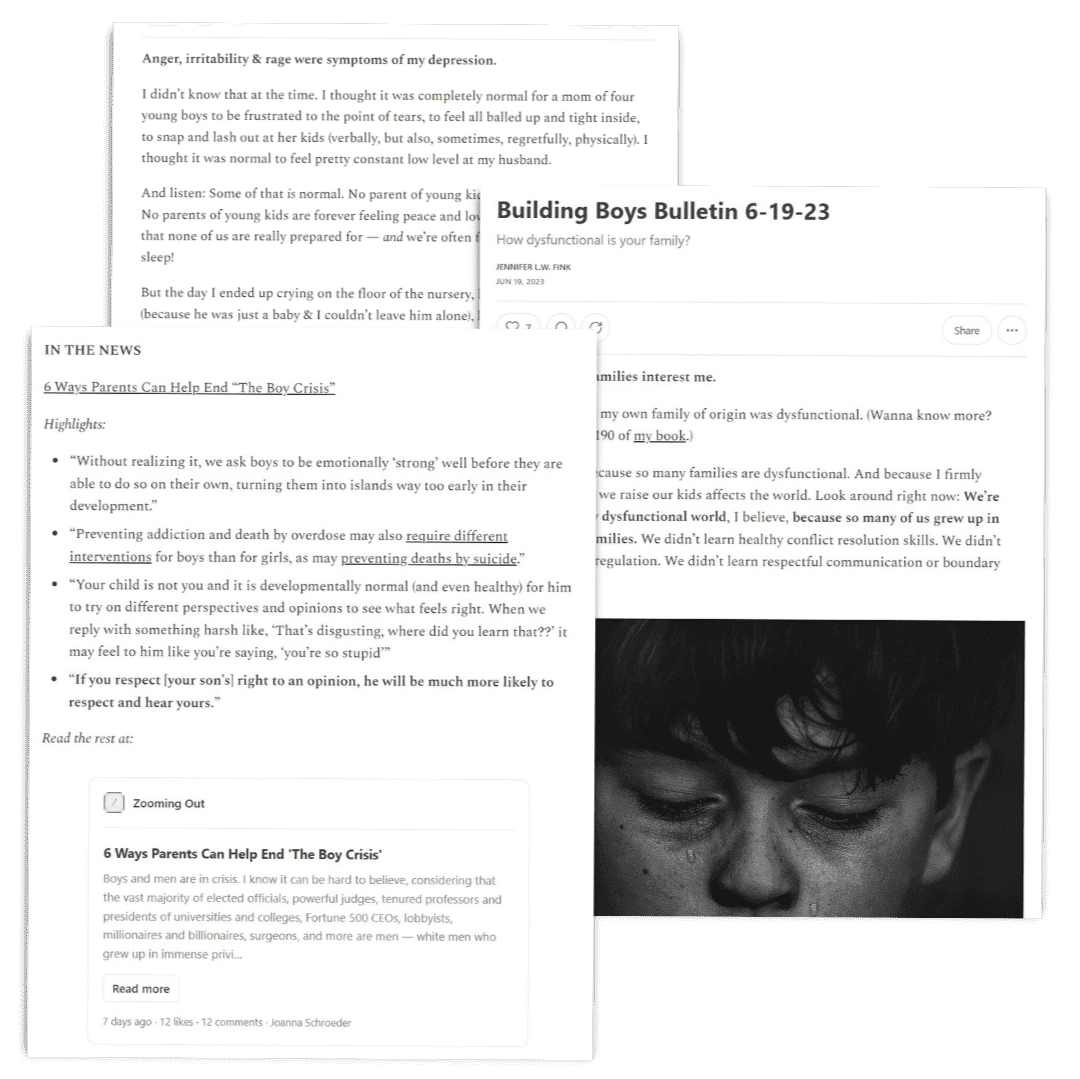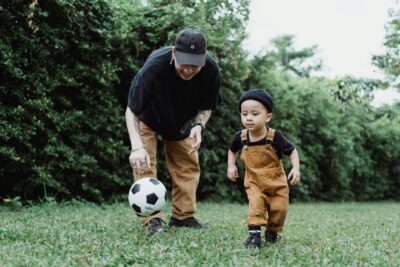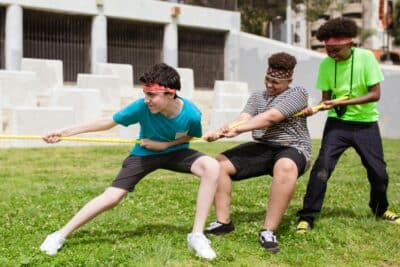
I was bullied as a child and no one ever told me that I had a RIGHT to my well-being and I learned to “take it.” As a result, I allowed people to push me around and I became a frightened, timid, individual until I reached my mid-30s… What kind of mixed messages are we, the “grown-ups,” sending children who bully and are bullied?
–– Lisa Blyth, Blogging ‘Bout Boys reader who blogs at Living My Imagination
Boys & Bullying generated a lot of interesting and provocative comments, including the one above. What do you think of her perspective?
I think she brings up an important and valid point. When we don’t allow children to stand up for themselves — and I’d argue that certain zero-tolerance policies make it very hard for kids to stand up for themselves — we are, in effect, telling them to take it. We are slowly and subtly teaching them to tolerate abuse. And if the system (school officials, etc) fail to respond or protect the child, we are also teaching him (perhaps accurately) that the system is unreliable and has little to no interest in protecting people from psychological or emotional abuse.
But teachers and schools have a lot to handle, and even well-intentioned teachers and school administrators struggle with the issue of bullying. Take a look at some of these comments, which were posted on my Facebook page:
The problem is that bullying behavior is rarely reported, which puts a lot on the teachers to be able to spot it…but with as many demands as they have already, tht’s one that slips through the cracks. it’s also chalked up a lot to “kids will be kids.”
— A Wisconsin teacher
Pulling a card is a behavior management plan where a child pulls a card when they misbehave. As the infractions increase the punishment increase…if the child has a disability they can only receive 10 days per year. If this child had 10, the school hands are tied.
— Principal of a Georgia elementary/middle school
Part of the problem, as the Wisconsin teacher points out, is that our schools contain a widely diverse student body:
Very few other countries have the poverty issues the the US has, nor do they have the number of special needs students.
Just imagine trying to deal with bullying in a class or school that contains hungry children, or children who have been abused, or kids who have serious disabilities and mental health concerns. I can see how that would be a challenge! And yet at the same time, I, like most other parents, want my children (and yours) to feel safe in school, at home, and in their community.
What I’ve learned, though, is that there are no easy answers. Solving bullying is not as simple as instituting an anti-bullying or zero-tolerance policy. It’s not as simple as saying “use your words” or “fight back if necessary.” To truly combat bullying, we need to address some serious societal problems. We need to address the home environment; I truly believe that a child who feels loved, valued and important is far less likely to bully another child than one who is belittled and abused at home.
Somehow, some way, we — as a society — have to learn to treat each other with respect, and we need to teach our children not only how to treat others with respect, but how to insist on respectful treatment as well. Because Lisa is right: sub-consciously encouraging our children to accept abuse, either at home or in school, will only perpetuate the problem.







5 Responses
You hit the nail right on the head:
“To truly combat bullying, we need to address some serious societal problems. We need to address the home environment; I truly believe that a child who feels loved, valued and important is far less likely to bully another child than one who is belittled and abused at home.”
I couldn’t agree more. Are schools expected to take on the responsibility of making our children feel loved, valued and important? I hope not.
Tough one. As a teacher, it’s definitely a huge challenge to see bullying. We’re required to be in the halls during passing time as much as we can be (it’s difficult as a first year teacher, as I’m usually setting up for the next class.) It helps for us to just be present, but it’s relatively rare for bullying to just be something that happens on the grounds during passing times or lunch.
Just today, I was talking with my juniors, who are currently blowing away the competition for the Homecoming spirit week points. The seniors are very bitter, and have been posting very hateful, spiteful, and even threatening things on Twitter and Facebook. The students don’t want to report it, because they want to save face with each other. The juniors that I was talking to begged me not to tell the associate principal and that it “really isn’t a big deal.”
It’s very difficult as a teacher to stop bullying when the students themselves are trying to cover it up.
Ok I have something to ask. I have twin 6 year old boys that are in 1st grade. One is a little shy and mellow, the other not shy at all and is very busy. Last week they all (a large group of kinder and 1st graders) were playing a game of “push tag”. kind of like our old game of tag but instead of touching to tag you they push. My not so shy son pushed another boy who happened to fall. All these kids got into trouble for playing this game. At lunch 2 hours, the boy my son pushed down was sitting next to my son turned to him and choked him. I got a call about this and the boys mom and I talked about this. later that week same son had .50 to get a snack after lunch. another larger child heard him say this and pushed him down and tried to get his money. My other son was pushing this boy trying to get him off. no teachers were involved and I did not get a call about this. So when my boys told me what had gone on I contacted the teacher. I was asked if this child was just playing around, then i was told that this boy has a hard home life and his dad had just killed his dog and on and on…….. I was also told that it had to happen twice for it to be considered bulling. I about lost my cool. My question to her is what happens if he is hurt the first time so bad there wouldn’t be a second time??? so as a parent what do we do?? I told my boys that if someone touches them with the intent of hurting them they fight back as hard as they can. they do anything in their power to get that person away from them. I will not teach my sons that it is not ok to stick up for themselves and fight back. I am teaching them that it is ok to stand up for what you believe in and you have every right to protect yourself.
I think you’re doing a great job. It’s very upsetting to find out that things happen at school that we don’t know about; sometimes, some schools seem to err on the side of not wanting to bother parents with every little thing. It’s even more upsetting to tell the school you’re worried about something and have them basically say, “don’t worry about it.”
You’re already teaching your sons how to respect themselves and others. You’re already listening to your boys. And you’re already advocating for them at school. Keep up the good work!